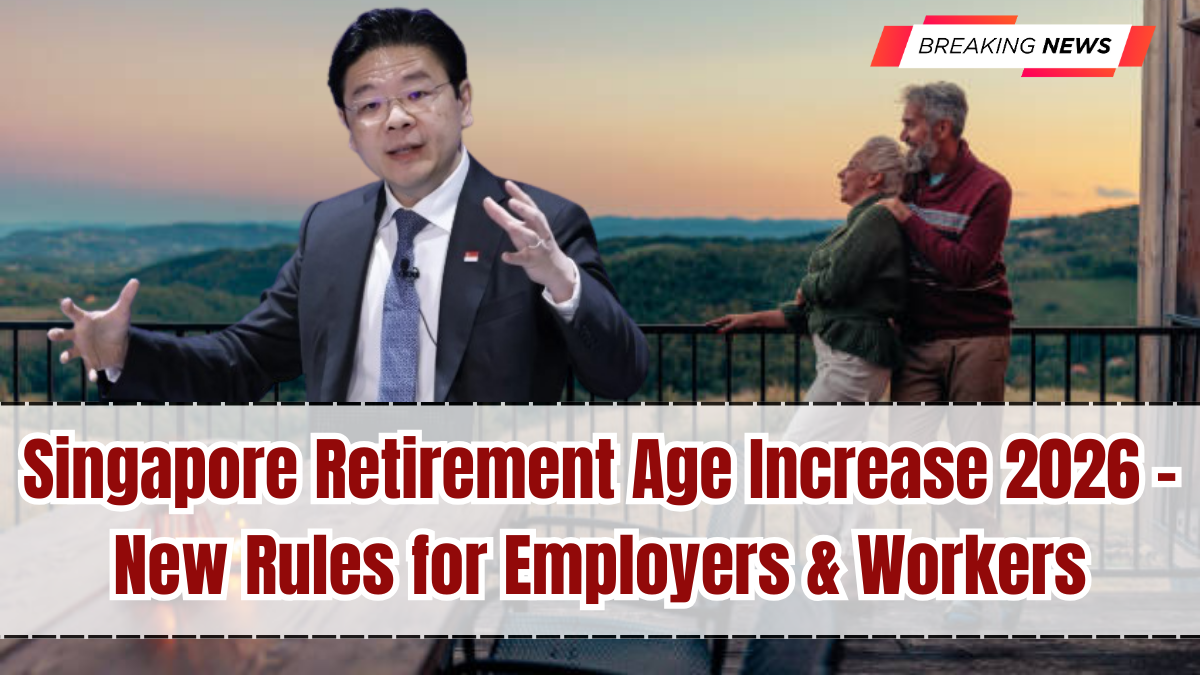Retirement policies are changing globally as governments respond to longer lifespans and shifting workforce dynamics. Singapore is no exception. The government has officially announced an increase in the retirement and re-employment age starting in 2026, a move that directly impacts employers, employees, and the economy at large. The Singapore retirement age 2026 update is designed to give senior workers more years of employment security while helping businesses retain experienced talent.
This change reflects Singapore’s commitment to building an inclusive workforce where age is not a barrier to opportunity. With better healthcare and longer life expectancy, many Singaporeans are choosing to remain in the workforce beyond traditional retirement ages. The government’s updated framework ensures these workers can do so with dignity, while employers benefit from their skills and experience.

What is Changing in 2026?
Under the new rules, the official retirement age in Singapore will be raised from 63 to 64 in 2026. At the same time, the re-employment age will be increased from 68 to 69. The re-employment framework allows workers who reach retirement age to continue working if they are medically fit and willing, ensuring they can stay in employment longer if they wish.
This change is part of a broader roadmap announced earlier by the Tripartite Workgroup on Older Workers, which laid out progressive increases in retirement and re-employment ages up to 2030. By gradually raising the limits, the government is balancing the needs of businesses, employees, and the economy while avoiding sudden disruptions.
Why the Retirement Age Increase Matters
The Singapore retirement age 2026 update is more than just a policy change; it addresses important social and economic realities. As Singapore’s population ages, there is a growing need to keep older citizens economically active. This helps reduce pressure on social support systems, ensures skills are not wasted, and provides seniors with financial independence.
For workers, the increase offers security and reassurance that they will not be forced to exit the workforce too early. Many individuals over 60 remain capable and motivated, and the extension allows them to continue contributing. For employers, retaining older employees brings stability, mentorship opportunities for younger staff, and reduced hiring costs.
Impact on Employers
Employers will need to review their workforce policies and prepare for the extension of retirement and re-employment ages. Some key adjustments include updating HR frameworks, revising contracts, and ensuring workplaces remain age-friendly. Businesses will also need to focus on training and reskilling to keep older workers relevant in rapidly changing industries.
The government has emphasized that employers must comply with these new rules and cannot dismiss employees solely based on age. Instead, they are encouraged to embrace diversity and promote inclusivity. To support employers, funding schemes and grants are being extended to cover job redesign, workplace ergonomics, and training initiatives.
Benefits for Workers
For senior employees, the Singapore retirement age 2026 policy provides peace of mind. Workers who wish to continue working can do so legally, without fear of mandatory retirement at 63. It also provides opportunities to build larger retirement savings, gain additional CPF contributions, and enjoy a more active lifestyle through continued employment.
The re-employment framework ensures that even after reaching retirement age, employees can negotiate extensions of their contracts in blocks of one year, up to the age of 69. This flexibility gives seniors more options to decide when and how they want to retire, balancing work with health and personal needs.
Wider Economic Impact
On a broader scale, this policy supports Singapore’s long-term economic strategy. With a declining birth rate and fewer younger workers entering the labor market, retaining older employees helps maintain a steady workforce. It also ensures valuable experience and institutional knowledge remain within industries, reducing the talent gap.
Furthermore, having more seniors in the workforce increases overall consumption, supports CPF contributions, and boosts the economy. As life expectancy continues to rise, these policies ensure that Singapore remains resilient and competitive.
Preparing for 2026
Both employers and employees should start preparing for the transition now. Employers should audit their workforce and identify roles where older workers can continue contributing effectively. Training programs, health support initiatives, and workplace adjustments should be implemented early to ease the transition.
Employees nearing retirement age should also plan ahead, considering how continued employment might fit into their financial and lifestyle goals. This includes reviewing CPF savings, healthcare plans, and personal retirement strategies.
Conclusion
The Singapore retirement age 2026 increase is a progressive move that benefits workers, employers, and the economy as a whole. By raising the retirement age to 64 and the re-employment age to 69, Singapore is ensuring that senior citizens remain active, independent, and financially secure. Employers must adapt their policies, while workers can look forward to more opportunities for meaningful employment. This change is not just about extending working years but about building a stronger, more inclusive future for all generations.
FAQs
What is the new retirement age in Singapore from 2026?
The official retirement age will increase from 63 to 64 in 2026.
What is the new re-employment age?
The re-employment age will increase from 68 to 69, allowing workers to stay in employment longer if they wish.
Why is the retirement age being increased?
The increase reflects longer life expectancy, healthier seniors, and the need to retain experienced workers in the labor market.
How will this affect employers?
Employers must comply with the new rules, review contracts, and ensure age-friendly workplaces while offering re-employment opportunities.
Will the retirement age increase further after 2026?
Yes, the roadmap outlines gradual increases, with the retirement age set to reach 65 and re-employment age 70 by 2030.
Click here to know more.
